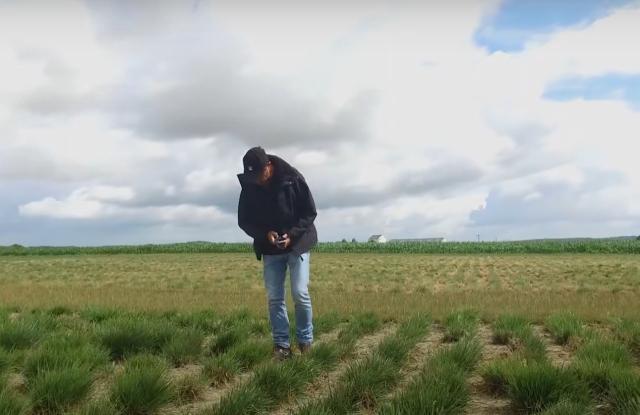Where did our 4turf® range come from? Meet the breeder behind the vision
Few people have had as big an impact on turfgrass development as Christophe Galbrun, DLF breeder. We asked him about his life’s work and his motivations for tackling the tricky techniques that turned his intuitions for the drought-resistant potential of tetraploid grasses into a worldwide turfgrass phenomenon.

‘Standing out from the crowd’ – the work of Christophe Galbrun, the plant breeder who created 4turf®
DLF breeder Christophe Galbrun is the man who single-handedly developed a new product category: tetraploid turfgrasses. When he set out on this route in the late 1990s, the nay-sayers told him there was no market for them; his response “We’ll create one!”
Which is exactly what he did.
In search of drought-resistance
For readers unfamiliar with turfgrass genetics, grasses typically have two sets of chromosomes in each cell; they’re known as ‘diploids’. Grasses with four sets of chromosomes are ‘tetraploids’. Tetraploid grasses are a good environmental choice: they need less water, are resilient, and contain more nutrients in each cell.
The earliest tetraploid types produced in the 1960s were all made for forage purposes, and the first turfgrass types did not perform well and were difficult to produce.
Christophe saw things differently: “I knew there was potential, and I wanted something that would stand out from the diploid crowd. This looked like an impossible challenge because tetraploids lack the fineness and density that the market wants. Developing them was a risk, but their good resistance to drought persuaded me that it was a risk worth taking.”
With a good pool of diploid genetics, Christoph managed to create good results early on in the process. That first round of tetraploidisation produced the DOUBLE and TETRAGREEN varieties. DOUBLE turned out to be a game-changer.
Tetraploids – the professionals choice
To succeed in plant breeding you need perseverance. “There have been as many failures as successes along the way, but that’s how you learn,” says Christophe.
“I’m constantly on the lookout for innovation; that’s what drives me on. Talking to turfgrass users has taught me a lot. The characteristics I’m looking for are drought tolerance, disease-resistance, and a darker colour – all traits that are of major concern for groundsmen and greenkeepers who need to balance turf performance against budget. Today there are stadiums that uses tetraploid ryegrasses as the sole component. In most cases however, the tetraploids are sold in mixtures with other species that provide additional benefits.”

"I knew there was potential, and I wanted something that would stand out from the diploid crowd. This looked like an impossible challenge because tetraploids lack the fineness and density that the market wants."
Where next for tetraploids and 4turf®?
Christophe believes there’s still room for improvement in tetraploid performance.
“Our focus is now on improving traits where the performance of diploid ryegrasses has been unparalleled. We intend to challenge that position with the next generation of 4turf®.
Christophe’s advice to the next generation of plant breeders is simple: “It’s important to maintain the spirit of innovation and not just follow what others do.”
Want to learn more about the potential of 4turf® tetraploid turfgrasses? Speak to your nearest DLF representative.